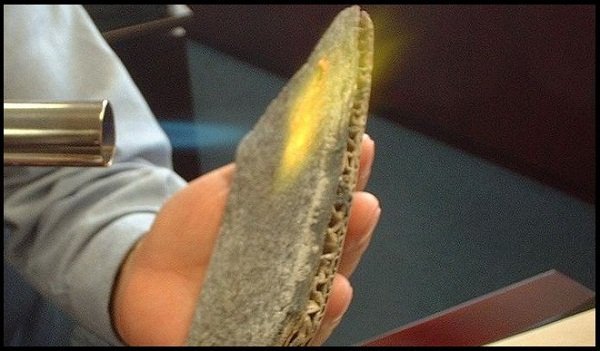Scientists create the world's best heat-resistant material, which can be used for spacecraft
The reusable spacecraft will help the aerospace industry in general and space exploration in particular save more costs and can be more widely available - that's why the Aviation agencies are always looking for ways to accelerate the process of researching and developing them. However, these spacecraft are constantly exposed to very high temperatures every time they exit and return to Earth's atmosphere. Creating materials that can withstand temperatures like hell is a real need.
Scientists from the National University of Science and Technology (NUST) in Moscow (Russia) recently made a ceramic-like material that is more heat-resistant than any other material.
The material previously held the title of "the most heat-resistant material" tested in 2016 by a research team from Imperial College London. Using laser heating techniques to test materials at very high temperatures, they calculated that a chemical compound made of hafnium - a transition metal, and carbon, had a melting point. the highest ever recorded. Their findings showed that hafnium carbide melted at about 4,000 degrees Celsius.
Before the discovery of the unbelievable melting point of hafnium carbide, researchers at Brown University used computer modeling techniques and made a prediction that a material made of hafnium, carbon, and nitrogen would have had ability is the world's best heat resistant material. Their simulated results show that the material will melt at more than 4,100 degrees Celsius, or nearly two-thirds of the surface of the Sun.
Knowing the predictions of the Brown researchers, NUST scientists planned to make hafnium carbonitride and conduct a test of it to compare it with hafnium carbide.
To create the new material, they put powder and carbon hafnium involved in a high-energy collision reaction with the balls inside a cylindrical grinder called a "ball mill". Ball mills are often used in the ceramic manufacturing process to grind materials into uniformly small particles. Following the high-energy ball milling reaction, the scientists burned a mixture of hafnium and carbon particles collected in a nitrogen atmosphere.

A plate of hafnium carbonitride
The samples of hafnium carbide and hafnium carbonitride are then placed on graphite plates for testing in a vacuum. When heated with a battery with molybdenum electrodes, the scientists found that the melting point of hafnium carbonitride is higher than that of hafnium carbide.
Because the melting point of hafnium carbonitride is very high - more than 4,000 degrees Celsius - one cannot accurately measure it in a laboratory. Future tests will use laser technology to determine the exact number, such as the one used by Imperial College London to determine the melting point of hafnium carbide.
The material's heat resistance, as well as its mechanical rigidity, make it a promising candidate for use in the fabrication of parts of a spacecraft - things that are constantly in contact with the environment. highest temperatures on the planet, such as the bow, propulsion, and wings. In addition, researchers plan to test hafnium carbonitride under ultrasonic conditions.
You should read it
- How to Coat Something in Silicone
- What is CPU heat sink and how does it work?
- Detecting material transmitting electricity but not transmitting heat, contrary to the law in textbooks
- Should we buy laptop heat sink base?
- Interesting applications come from heat blowers (heat generators)
- What does toughened glass do that hard?
 Why do whales swing their tails up and down, but sharks swing their tails to the sides?
Why do whales swing their tails up and down, but sharks swing their tails to the sides? New research shows Tyrannosaurus Tyrannosaurus relies on her sixth sense to 'love'?
New research shows Tyrannosaurus Tyrannosaurus relies on her sixth sense to 'love'? The mysterious bubble that appears in the center of the Milky Way galaxy is finally 'decoded'.
The mysterious bubble that appears in the center of the Milky Way galaxy is finally 'decoded'. 12 mysterious deepest holes in the planet
12 mysterious deepest holes in the planet Meteors have the power to destroy 10 billion atomic bombs hitting the Earth at the 'super dangerous' angle, completely eliminating dinosaurs
Meteors have the power to destroy 10 billion atomic bombs hitting the Earth at the 'super dangerous' angle, completely eliminating dinosaurs Misconceptions about biology that many people still believe in.
Misconceptions about biology that many people still believe in.